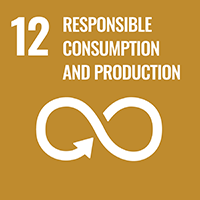
Environmentally sustainable business practices
Products
The environmental footprint generated by products over their life cycle can be influenced during the product design phase. Our product development process includes environmental requirements, and many of the required product qualities, such as energy efficiency, maintainability, and recyclability, are beneficial for the environment. The updateability and modular design of many of our products, combined with our field services, extend the product life cycle, which typically ranges from a year to over 20 years. However, we are aware that the global scarcity of resources and rapidly developing environmental requirements call for us to improve our product design process continuously.
To ensure that our products are safe for people and the environment, we set strict requirements on the materials used in our products during the product design process. Components are analyzed early in the new product development process to ensure compliance. We systematically collect information about substances that REACH* legislation has defined to be of very high concern as well as about compliance with RoHS** legislation in order to enable the safe use and end-of-life treatment of products. Furthermore, we report the required information in the SCIP database*** of the European Chemicals Agency.
* REACH = Registration, Evaluation, Authorisation, and Restriction of Chemicals
** RoHS = Restriction of Hazardous Substances in electrical and electronic equipment
*** SCIP = Substances of Concern In articles, as such or in complex objects (Products)

Waste and recycling
Waste associated with Vaisala’s business operations is produced at the beginning of the supply chain in the manufacture of materials and components, in Vaisala’s own operations related to manufacturing, repairing, and servicing of products and the work of our personnel, as well as at the end of the value chain when a customer removes a Vaisala product from service.
Our main manufacturing site in Finland generates most of the waste in our own operations. There waste is sorted into several different categories to enable its efficient processing and use.
We also aim to reduce the amount of waste generated, for example by utilizing reusable trays for packaging with some of our suppliers and reducing scrap material produced in our manufacturing processes. We reduce the amount of waste at the end of the value chain by designing our products to last as long as possible and offering diverse maintenance and repair services for our products. In addition, we advise our customers on how to recycle our products at the end of their life cycles.

Renewable energy and energy efficiency
We have used 100% renewable electricity since 2020. In addition, we invest in the energy efficiency of our premises by utilizing heat recovery systems and LED lighting, for example.

Emissions
We have set near-term science-based greenhouse gas (GHG) emissions reduction targets approved by the Science Based Targets initiative (SBTi).
Our targets are:
Vaisala commits to reduce absolute scope 1 and 2 GHG emissions 52% by 2030 from a 2021 base year*.
Vaisala also commits to reduce scope 3 GHG emissions from purchased goods and services, upstream transportation and distribution, business travel, employee commuting and use of sold products 52% per million EUR value added within the same timeframe.
*The target boundary includes land-related emissions and removals from bioenergy feedstocks.
